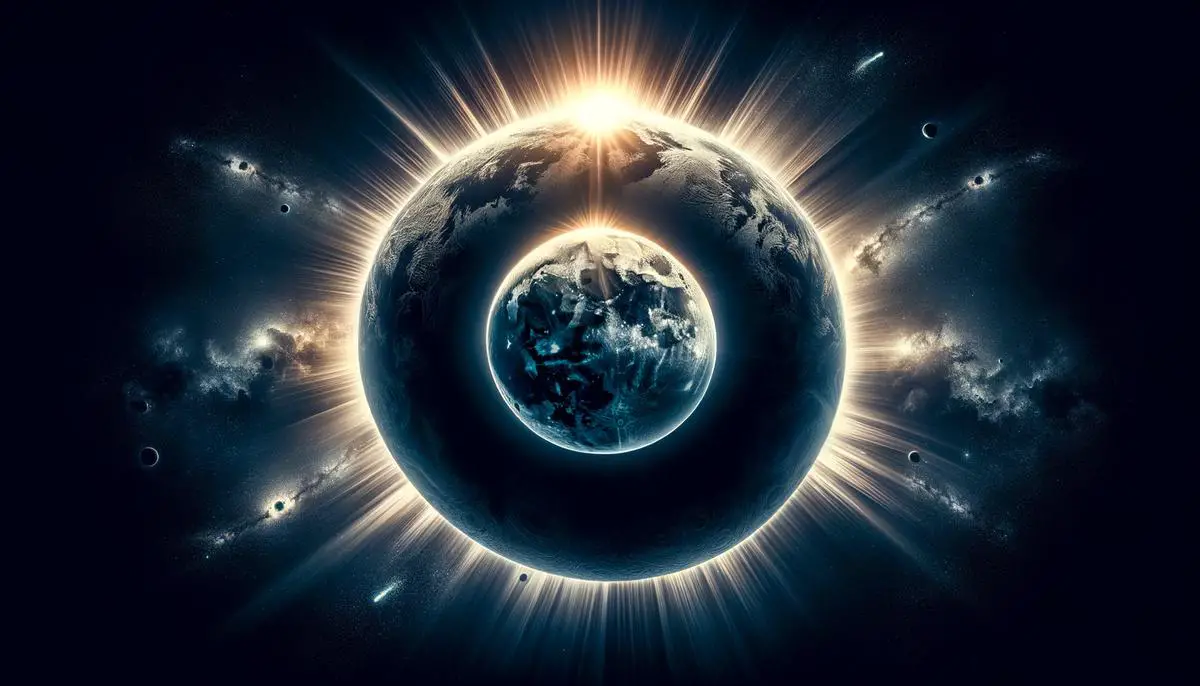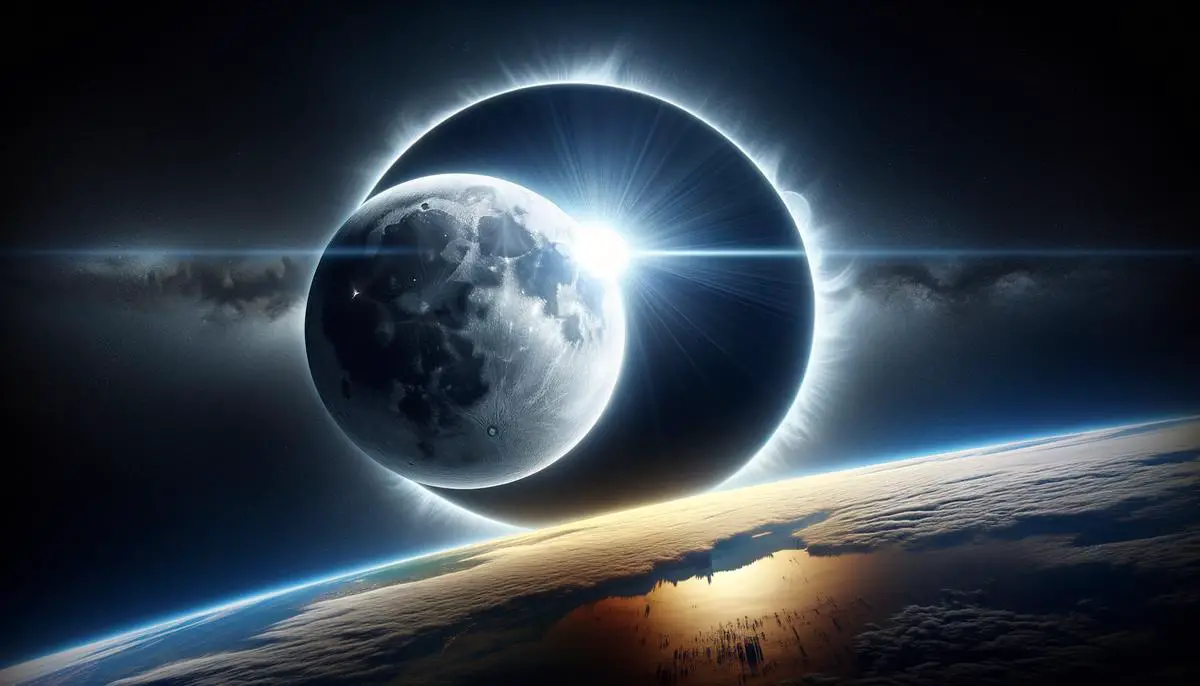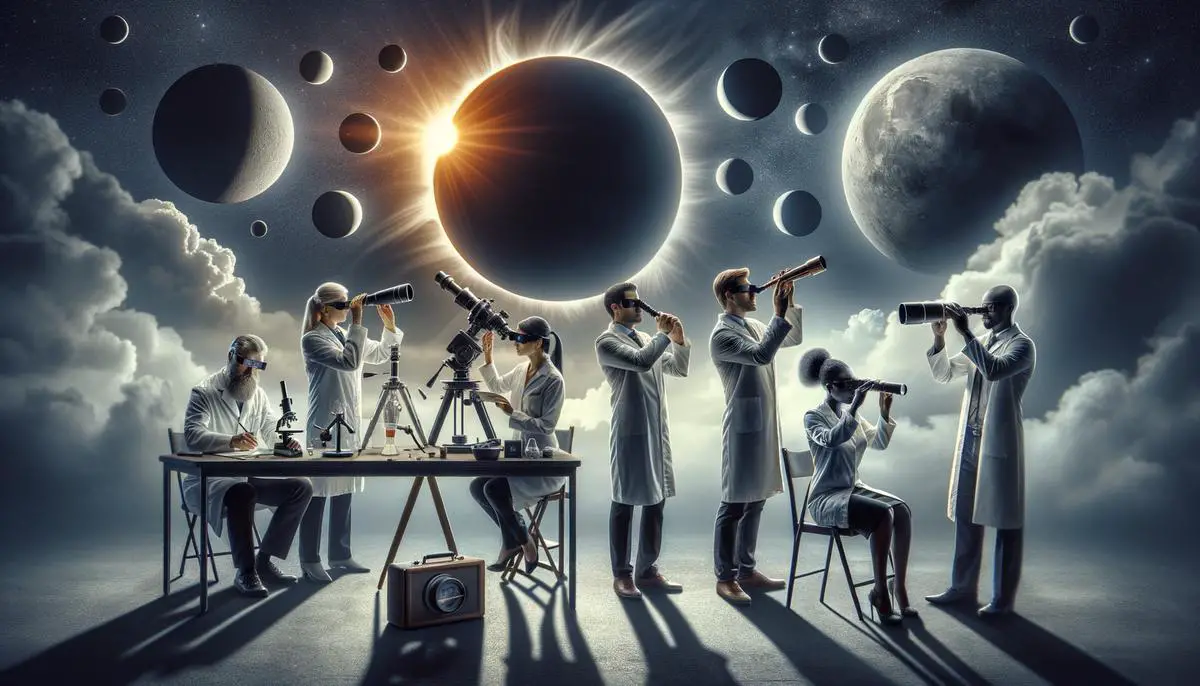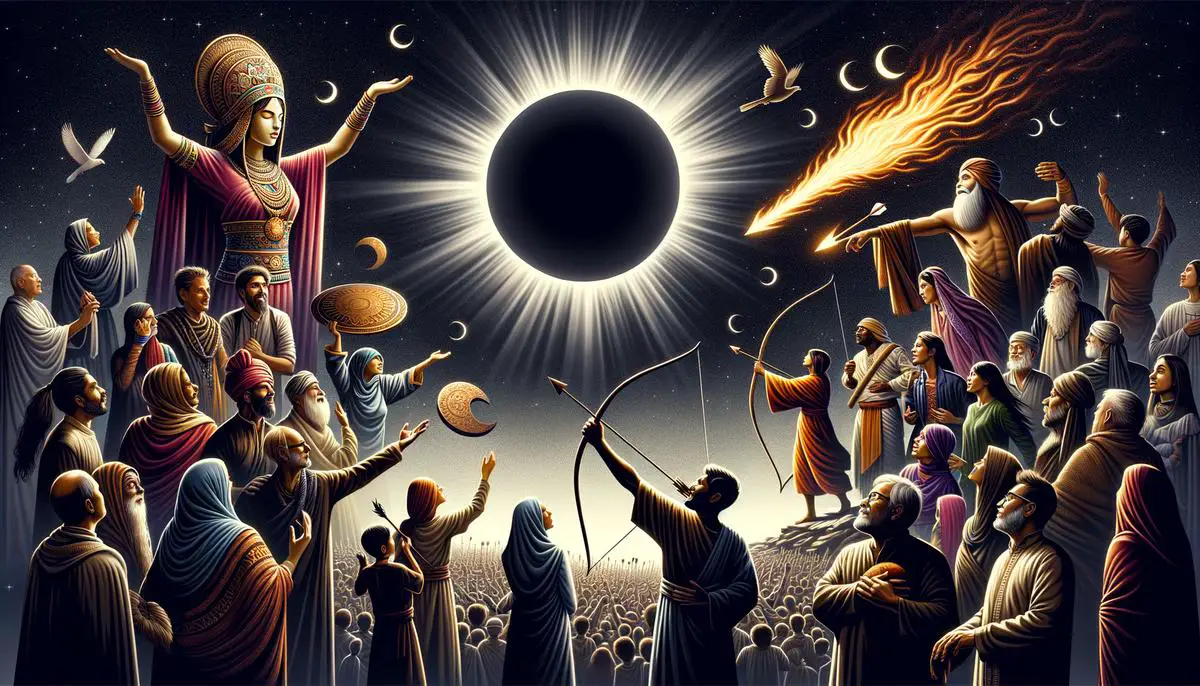Origins of Solar Eclipse Myths
Throughout history, solar eclipses have been a source of fascination and sometimes anxiety across various cultures around the globe. This celestial event, where the moon passes between the sun and the Earth, temporarily blocking the sun's light, has inspired numerous myths and legends. These stories were attempts by our ancestors to interpret and explain the temporary darkening of the sky.
In many cases, eclipses were seen as omens or signs of significant events, according to the lore of ancient civilizations. The origin of these myths can be traced to a human tendency to personify natural phenomena and a need to explain the unknown.
In the past, when the mechanisms behind celestial events were not well understood, diverse cultures created imaginative tales to explain them. For example:
- In Vietnamese folklore, a giant frog was believed to be devouring the Sun1
- Norse mythology blamed wolves for celestial cannibalism2
These narratives, different in character and origin, share a common purpose: they offer explanations for the unusual quiet and darkness of an eclipse. Over the centuries, as scientific understanding progressed, these myths became less about fear and more about cultural heritage, but the fascination with solar eclipses continues to bridge the gap between ancient myth and modern science.

Impact of Myths on Behavior
Solar eclipse myths have influenced human behavior, combining superstition, ritual, and tradition into the fabric of societies worldwide. These myths, rooted in the mystery of celestial movements, have shaped collective human actions—from rituals to communal gatherings aimed at responding to supposed celestial events.
For instance, the ancient practice of banging pots and pans to scare away mythical beings believed to be devouring the sun illustrates how eclipses prompted communities to unite in a collective response, reinforcing social bonds and shared cultural identities.
Eclipses have not only shaped rituals but also influenced personal beliefs and behaviors with a variety of superstitions, some of which persist into modern times. Pregnant women, in particular, have been the focus of many eclipse-related superstitions, often advised to follow specific precautions during these celestial events to prevent harm to their unborn children3. This precautionary behavior underscores the human impulse to link natural phenomena with life's events, attributing significance to the celestial occurrences.
These myths and the behaviors they inspire reflect humanity's quest to find order and meaning in the universe, connecting the celestial with the terrestrial, the ancient with the contemporary.

Debunking Eclipse Myths with Science
Despite the numerous myths and superstitions that have surrounded solar eclipses for centuries, science provides a clear explanation to dispel the fear and uncertainty. Although there is an ancient belief that solar eclipses emit harmful rays capable of causing blindness or harming unborn children, modern astronomy and physics tell us otherwise. Scientific research confirms that the radiation during a solar eclipse is no different from that of regular sunlight4.
The only genuine risk arises from gazing at the sun without appropriate eye protection, which can lead to retinal damage — a danger present any day, eclipse or not. This highlights the importance of proper eye safety, such as using certified eclipse glasses, instead of succumbing to unfounded fears about ambient radiation.
The anxiety surrounding the consumption of food prepared during an eclipse has also been debunked by science. Unlike the age-old superstitions suggesting that food becomes poisoned or contaminated due to eclipse forces, there is no evidence to support such claims. Studies and understanding of electromagnetic radiation show that there are no specific changes or harmful increases in radiation during an eclipse that would affect food.
Solar eclipses, despite their striking appearance and historical myths assigned by human awe and fear, represent moments of celestial alignment but pose no illogical threat to organic life or food safety. Science teaches us to appreciate these cosmic events while standing firmly grounded in the evidence-based knowledge that the universe operates on principles that can be understood, predicted, and appreciated without resorting to unfounded superstitions.

As we unravel the intricate web of eclipse myths with the threads of scientific insight, it becomes clear that these celestial events are more than just moments of cosmic alignment; they are a testament to humanity's pursuit of knowledge. The transition from viewing eclipses through a lens of fear and superstition to one of curiosity underscores our journey towards understanding.
Solar eclipses continue to captivate our imagination, reminding us of our place in the vast universe and inspiring us to keep questioning, exploring, and appreciating the natural world around us.
- Krupp EC. Sky Tales and Why We Tell Them. Sky & Telescope. 2006;112(3):74-77.
- Krupp EC. Beyond the Blue Horizon: Myths and Legends of the Sun, Moon, Stars, and Planets. Oxford University Press; 1991.
- Ahluwalia BS, Kuanr R. An Insight into Eclipse Superstitions. Journal of Scientific Temper. 2019;7(3&4):175-181.
- Littmann M, Espenak F, Willcox K. Totality: Eclipses of the Sun. 3rd ed. Oxford University Press; 2008.
![]()
